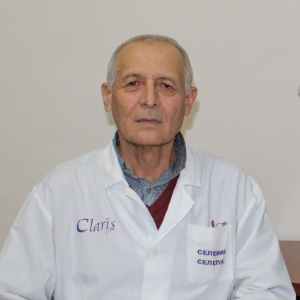Title : Introducing new promising varieties of zamin and duru-gavkhar-4 into the textile industry and achieving high-quality textile industry products from those varieties
Abstract:
During our presentation, a new medium fiber cotton variety Zamin (G.barbadense L.) and thin fiber high-yielding, disease and pest-resistant Duru-Gavkhar-4, created in the laboratory "Cotton Genetics, Selection, and Seed Breeding" of the Institute of Genetics and Plants of the Academy of Sciences of the Republic of Uzbekistan, created by the traditional (traditional) method of selection.-The creation of Gavhar-4 varieties and their superiority over other varieties are discussed. After the independence of the Republic of Uzbekistan (1991), the cotton planting area was reduced to 1 million 300 thousand hectares. Currently, the Republic of Uzbekistan occupies the 5th place in the world in terms of cotton cultivation, and the 10th place in terms of productivity. Before independence, the Republic of Uzbekistan exported 90% of its fiber. For fiber processing, the finished product output was only up to 10%. Currently, the export of fiber is stopped, and the production of finished products is started. Cotton-textile clusters are being established and the export of finished products is being launched. For this reason, breeders are faced with the task of creating new, fruitful, disease and pest-resistant varieties of cotton whose fiber quality meets world textile requirements. Therefore, the new Zamin and Duru-Gavhar-4 varieties of cotton created in our laboratory are superior to the standard varieties for textile requirements of cotton-textile clusters. In this work, the quality indicators of standard cotton varieties Namangan-77, C-6524, C-8295 and a new perspective variety Zamin have been characterized. Zamin cotton variety with the best fiber indicators was selected for sowing and further propagation of sown areas in the cotton-textile cluster Fergana Oseana textile LTD. From 2020, in the system of cotton-textile cluster Fergana Oseana textile LTD an elite seed farm will be organized to propagate the perspective variety Zamin in the Fergana district of the Fergana region. There is a great need for thin-fiber (G. barbadense L.) cotton varieties for the production of high-quality products in the republic. The currently sown fine-staple cotton varieties are characterized by low yield, late ripening, and resistance to various Fusarium races wilt and other cotton pests. Breeders are faced with the task of providing cotton-textile clusters with raw materials from high-quality cotton fiber. This requires the creation of new fine-fiber varieties of cotton, combining early maturing, high yields with an increased number of fruit branches, quantity, and weight of raw cotton in one box. These important elements ensure the yield of fine staple cotton. This article deals with the creation of the cotton variety Duru-Gavkhar-4 belonging to the genus Gossypium barbadense L. using a traditional synthetic breeding method. During many years of individual selection, a new promising fine-staple cotton variety Duru-Gavkhar-4 was created, which was obtained by crossing the Duru-Gavkhar variety with the 9647I variety. The new variety successfully passed the State Variety Test in 2020 with a result of 98 % in terms of varietal purity and uniformity. The fiber of the new cotton variety Duru-Gavkhar-4 belongs to type I. The vegetation period of the variety is 125–128 days, the yield is 33–38 ?entner/ha, the fiber yield is 33–35 %, the draw weight of one box is 4.0–4.2 g, the fiber length is 39–41 mm, the weight of 1000 seeds is 118.2 g. In terms of quantitative and qualitative indicators, this variety dominates the control varies which that was Termez-31 (G. barbadense L.). The micronaire index is 3.8–4.1, which fully meets the requirements of the textile industry. The promising cotton variety Duru-Gavkhar-4 is currently being tested in the cotton-textile cluster of “KOVOTECH” in the Bagat district of the Khorezm region.


